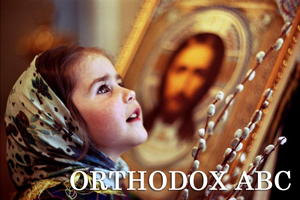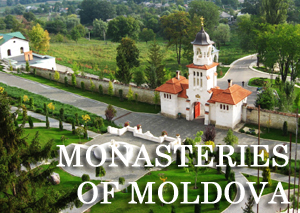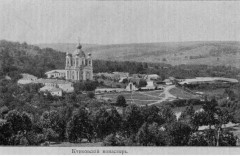
The monastery of the Nativity of the Mother of God, called the Curchi Monastery, is one of the most significant monuments of Moldovan architecture in Basarabia.
The monastery is located in Orhei judets (county), on thevalley of Vaticiu water, at a distance of 12 km from Orhei town, and 55 km from Chisinau, the capital of theRepublic of Moldova.
The monastery is situated on the right side of Vatici valley, at the foot of the forest called ‘Codru’ – prolongation of the legendary Codru woods where the archers of Stefan the Great passed. The monastery has a cultural and religious history of two and half centuries.
This monastery was considered in the past – and is still considered in the present – ‘the most beautiful and famous monastery in Basarabia’. According to a legend, the Curchi Monastery was founded by Stephan the Great, while its architectural heritage was developed later, in the 18th and 19th centuries. This version, however, is difficult to verify, as it does not have any documentary support. The most plausible version is that the Curchi Monastery was founded in 1773 by brothers Iordache and Mihail Curchi, who built in the beginning a modest wood skete (hermitage), and later erected the first stone churches. It is known about the two brothers that they later became monks and were given the names of Joan, and, respectively, Manasie.
The location of the Curchi monastery is of rare splendour, thank to the orchards and the woods surrounding it. The Monastery smoothes in the green sea, while the white walls of its churches and buildings look like bright spots that attract the views of all passers-by and visitors who become truly enchanted by the beauty of the place, keeping these images long in their souls.
The architectural ensemble of the settlement was constituted in the 18th – 19th centuries, the monastery containing five churches, the administrative building, six blocks of monastic cells, the refectory, bell tower at the entrance, and the monastery walls. The first wood church, sanctified in the name of Saint Great-Martyr Demetrius, was built around the year 1775 by Iordache Curchi, the ctitor and the first monk superior of the skete. On 21st September 1810 the first stone church was consecrated in the name of the Nativity of the Mother of God, ctitored by Toader Sabau, captain at Dubasari Vechi who was supervisor of 12 fords. He provides the monastery with 550 hectares of land; in 1808 he donates to the monastery the estate of Pripiceni with 780 hectares, houses in Chisinau, where the monastery establishes a metochion. Toader Sabau dies on 20th February 1814. Before death he takes monastic vows with the name of monk Filareth, and after death is buried in the pronaos of the church.
The winter church, with the name of Saint Great-Martyr Demetrius, and the old administrative building, were edified in 1843, but was consecrated only in 1847. The icon of the saint is still preserved on the wall of the church’s Altar. The summer church, or the big church as it is called, with the patron feast of the Nativity of the Theotokos, was built between 1866-1872, on the money of the monastery and on donations registered in themercy book. Old stones of the church built by Toader Sabau were also used to build the new Nativity of the Theotokos church.
In 1908-1909, the church of All Saints was built in the monastery’s cemetery. This church is mainly used to officiate divine services when one of the monks dies.
At a about 80 metres’ distance north-west of the big church is the church of Saint Hierarch Nicolas. Its construction began in 1914 and finished only in October 2005.
With a cultural and religious history of over two centuries, the Curchi Monastery is qualified among the most significant monuments of Moldovan architecture.
This sacred place has always been a hearth of cultural and spiritual life. Years of hardships determine the refuge to Romania of about 40 monks in 1944. They head to the monasteries of Cernica and Caldarusani. In 1958 the soviet authorities drove away the remaining monks, destroyed numerous icons, and burned over 4000 volumes of religious and laic literature. The churches on the territory of the monastery were transformed into deposits or auxiliary buildings that were used for non-worship purposes.
The history of Curchi Monastery since early 1960s has a very sad turnover, just like in the case of many other monasteries of Moldova, because this is the period when the countdown of years starts, when human indifference was revealed in all its ‘plenitude’. Between 1959 and early 1990s, the Monastery didn’t have a devoted administrator. In 1959 it was alienated by force from the Church, and indifference found shelter in the Church’s buildings, including in the churches of the Curchi Monastic Ensemble.
Thus, in the period when a psychiatry hospital was created on the territory of the Nativity of the Mother of GodMonastery, the five churches of the monastic ensemble, as well as the buildings that had been used in the past for the household purposes of the monastic settlement, were left at the mercy of chance.
Ruined and almost destroyed looked the Monastery on 27th August 1999, when its administration was entrusted to father Archimandrite Siluan (Salaru), who is the actual monk superior of the Curchi Monastery and Exarhos of Monasteries in Moldova. Moreover, in the All Saints’ church of the monastery’s cemetery, a morgue was created since the time when the monastery was used as psychiatry hospital, and there still were human corpses in the church when the settlement was entrusted to Fr. Archimandrite Siluan.
The firm intention of the monastic community that came to the Monastery in that time, was to rebuild the Monastery in order to give it back its historical aspect and to make it what it had been before it was vandalized – one of the richest monasteries in terms of spirituality, material state, architecture, organization, and monastic life, as at the moment of the Monastery’s closure the number of the monks of Curchi Monastery, according to historical documents, was much over 100.
The Monastery is currently not only a very important spiritual centre, but also an attractive tourism site. Secular, 200-350 year-old oaks grow in this territory.
Today the Curchi Monastery is in full process of reconstruction. The refurbishment of the monastic ensemble has required – and still does – enormous labour.
A dendrologic park of rare beauty was created on the territory of the monastery, under the guidance of Academic Alexandru Ciubotaru, former director of Chisinau Botanic Garden. Trees and bushes, including rare species, were planted, combining beautifully with the architecture of the holy settlement. The Curchi Monastery radically changed its aspect, compared to several years ago. However, it is not only a place where builders and artists work, but also – and most importantly – a place where monastic life is embraced entirely. Rich spiritual life is of major significance for the Monastery, for the monastic here can pray peacefully not only for themselves, but also for all those living in the world.
The Curchi Monastery, this fruit of the ancestral faith, was and continues to be a splendid chronicle that is being written for about 237 years. Doubtlessly, this holy site will come to what it used to be – a true hearth of piety and faith, a spiritual fortress of all people of good will.
We inherited a valuable pearl, and we must preserve it and pass it over to the coming generations.
Translated by Priest Constantin Cojocaru
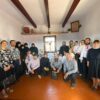 Memorial house of romanian elder Sofian Boghiu Consecrated in his native Village
Memorial house of romanian elder Sofian Boghiu Consecrated in his native Village 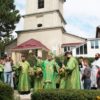 On the 14th Sunday after Pentecost, His Eminence Metropolitan Vladimir celebrated the Divine Liturgy in the St. Nicolas Monastery, Dobrusa village, Soldanesti region
On the 14th Sunday after Pentecost, His Eminence Metropolitan Vladimir celebrated the Divine Liturgy in the St. Nicolas Monastery, Dobrusa village, Soldanesti region 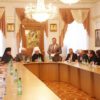 Inauguration of the volume of articles presented at the National Scientific Conference “The Orthodox Church and the State: Faith and Knowledge”
Inauguration of the volume of articles presented at the National Scientific Conference “The Orthodox Church and the State: Faith and Knowledge” 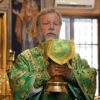 The 12th Sunday after Pentecost – kindness in God changes the world we live in
The 12th Sunday after Pentecost – kindness in God changes the world we live in 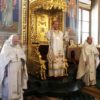 The 11th Sunday after Pentecost – loving our God and our neighbor
The 11th Sunday after Pentecost – loving our God and our neighbor 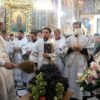 The Transfiguration of the Lord, celebrated in the Nativity of the Lord Cathedral in Chisinau
The Transfiguration of the Lord, celebrated in the Nativity of the Lord Cathedral in Chisinau 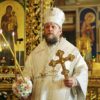 His Eminence Metropolitan Vladimir celebrates 65th anniversary
His Eminence Metropolitan Vladimir celebrates 65th anniversary  Divine Service at the St. Theodore of Tyre Monastery (Ciuflea) in Chisinau, and congratulation of Archimandrite Nicolae (Rosca), the Monastery’s confessor-administrator, on the 50th anniversary.
Divine Service at the St. Theodore of Tyre Monastery (Ciuflea) in Chisinau, and congratulation of Archimandrite Nicolae (Rosca), the Monastery’s confessor-administrator, on the 50th anniversary.  The Tenth Sunday after Pentecost: Divine Liturgy in the Nativity of the Lord Cathedral in Chisinau
The Tenth Sunday after Pentecost: Divine Liturgy in the Nativity of the Lord Cathedral in Chisinau 
